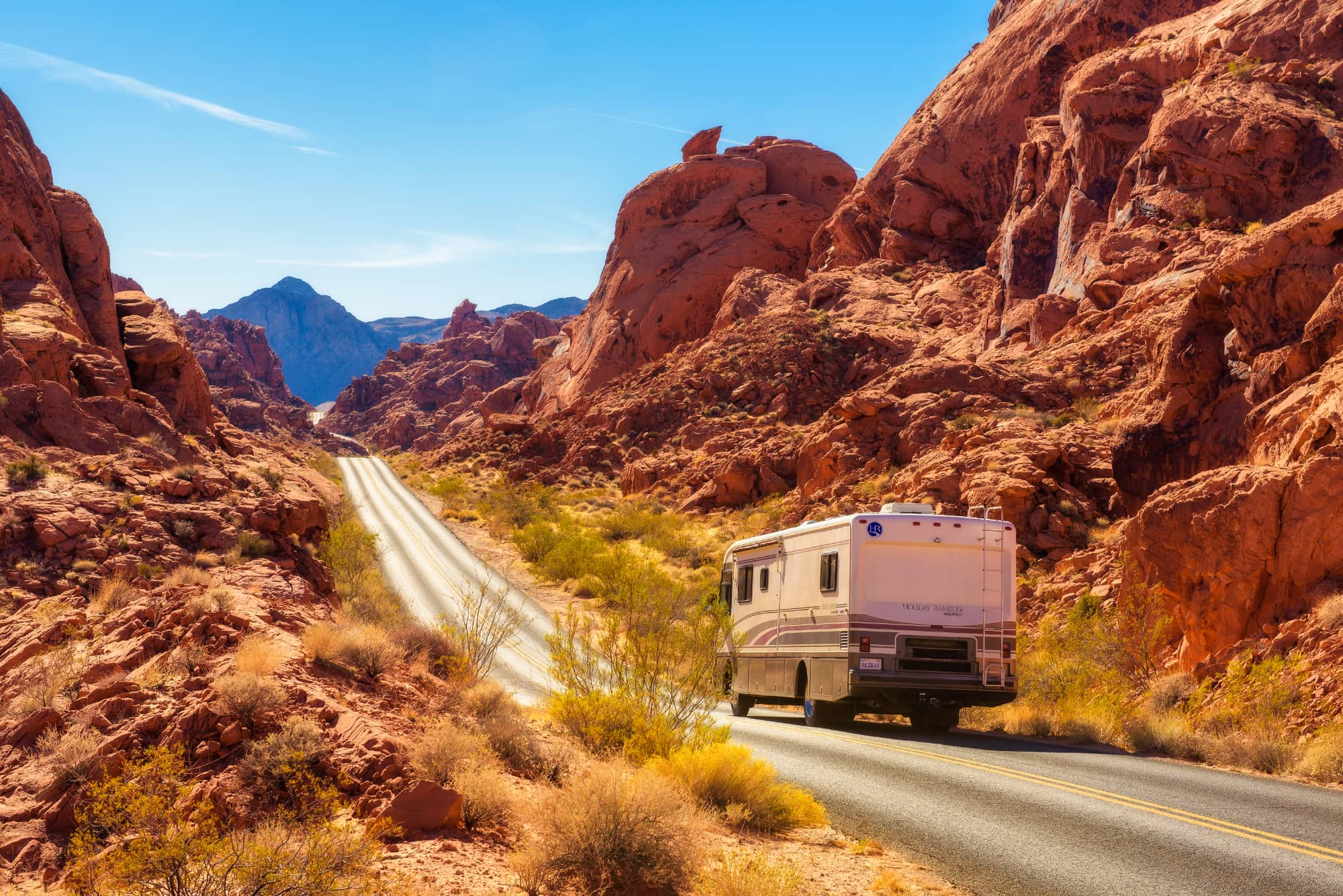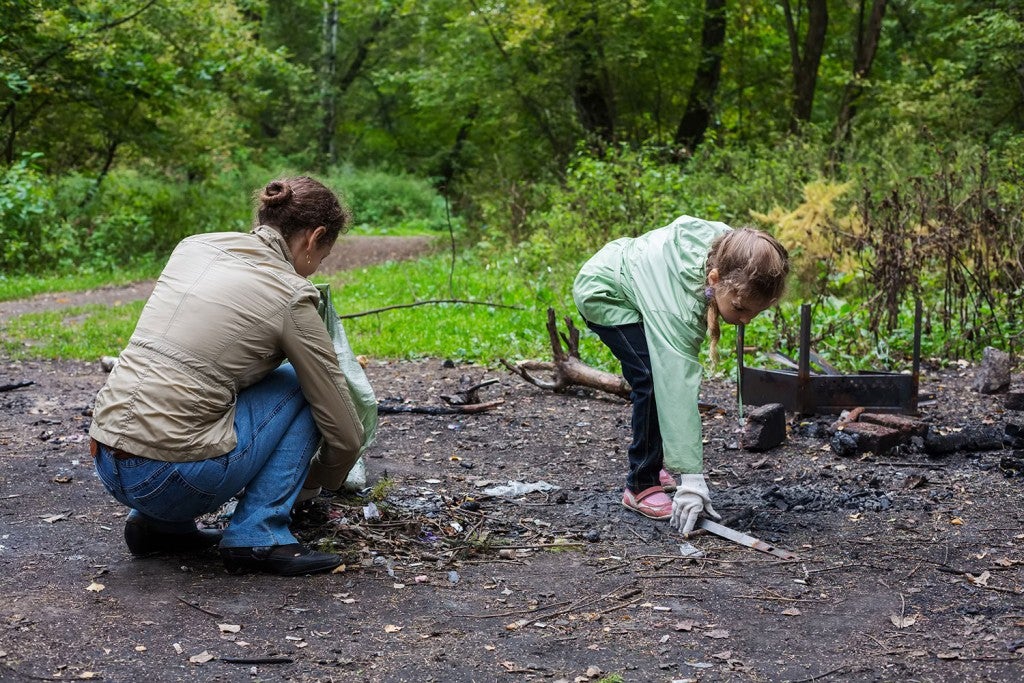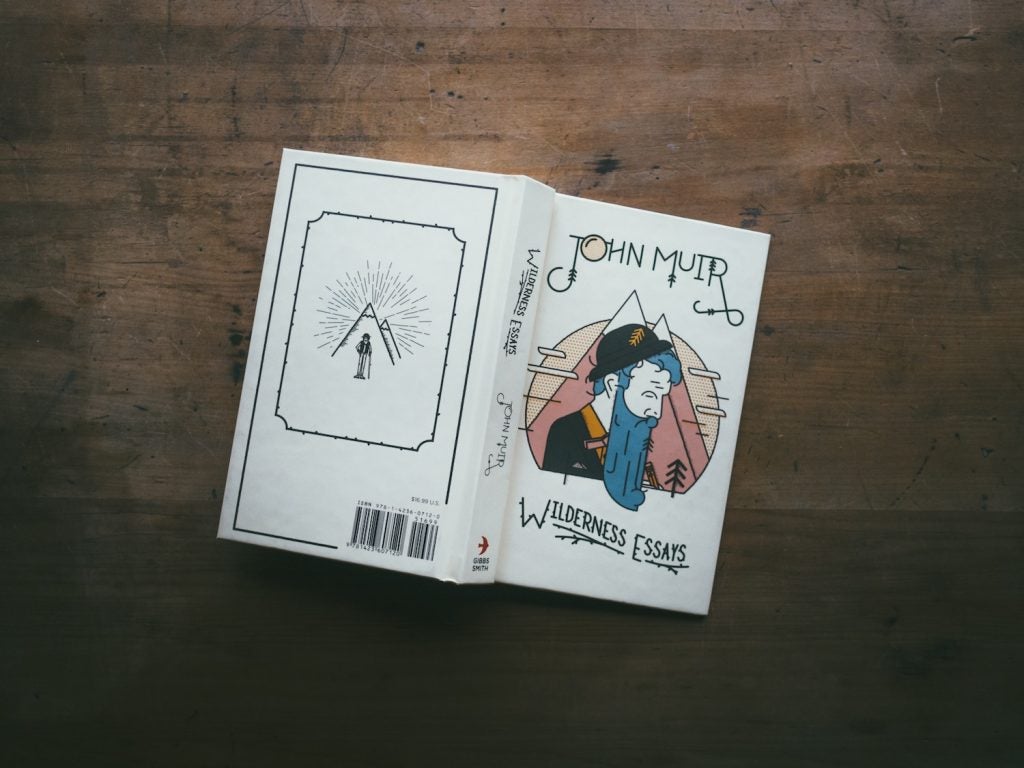This article is brought to you by our friends at Renogy. They make top-quality, time-tested gear to simplify your RV experience. Their camping solar panels, generators, and other accessories work with all types of RVs.
Millennials have been blamed for a downturn in sales of all sorts of products, supposedly denting everything from the diamond industry to casual dining chains, delaying homeownership and skipping breakfast cereals. There’s one sector that’s recently seen a comeback, however, thanks to millennial consumers. In 2016, the Recreation Vehicle Industry Association reported a 40-year peak in sales, largely driven by outdoorsy young people who are eager to explore.
It’s not just #vanlife staples like Sprinters, Westfalias, and old Dodge delivery vans that are getting all the love. Millennials are eager to drive or tow all types of RVs, from destination trailers to pop up campers to massive motorhomes. Sales have risen steadily enough since the end of the Great Recession that RV makers are opening or expanding facilities from Iowa to Oregon. Be sure to download The Dyrt Pro to download maps to find campgrounds offline during your own RV adventures.
The last time there was this much excitement about recreational vehicles, it was before the gas crisis in the 1970’s. Another generation of outdoorsy young people were, much like today, celebrating a back-to-the-land ethos that had the outdoor industry booming. Though that association between RVs and the “Me Decade” has persisted, for better or for worse, the history of RVs actually goes back much further.
The First Types of RVs in America
Before there were Airstreams, Winnebagos, and Jaycos, there was Pierce-Arrow’s Touring Landau. It debuted at the tenth annual auto show in Madison Square Garden in 1910, an opulent event in which 7,000 square feet of showroom space was designed to look like a Roman amphitheater.
New York socialites were thrilled with the luxurious new vehicle that included a fold-out bed, a “potted toilet,” and a fold-out sink— the essential comforts and dignities of home, housed inside of a vehicle that offered a new kind of freedom.
This was the era when beachside towns like Asbury Park in New Jersey and Cape Cod were only just beginning to fill up with a generation of Americans who had new ideas about leisure time and how it should be spent. The outdoors was seen as a healthy alternative to bustling industrial cities, a place that was as spiritually fulfilling as it was physically invigorating.
Further afield than the New England villages and seaside resorts near major metropolitan areas, the National Parks system wasn’t yet fifty years old. Still, sites like Yellowstone and Yosemite had quickly grown in popularity, in large part thanks to railroad companies that had gone to the trouble and expense of laying down track and building glamorous new National Park lodges.
However, the age of the automobile was already on its way. To the ultra-rich, the first types of RVs represented a way to explore the American continent coast to coast as comfortably as they would in private rail cars, with all the freedom of the pioneers’ iconic covered wagons. Even before the ubiquity of truck stops and gas stations, RV travel was both novel and irresistible to travelers with deep pocketbooks and even deeper wanderlust.
The RV Foundation
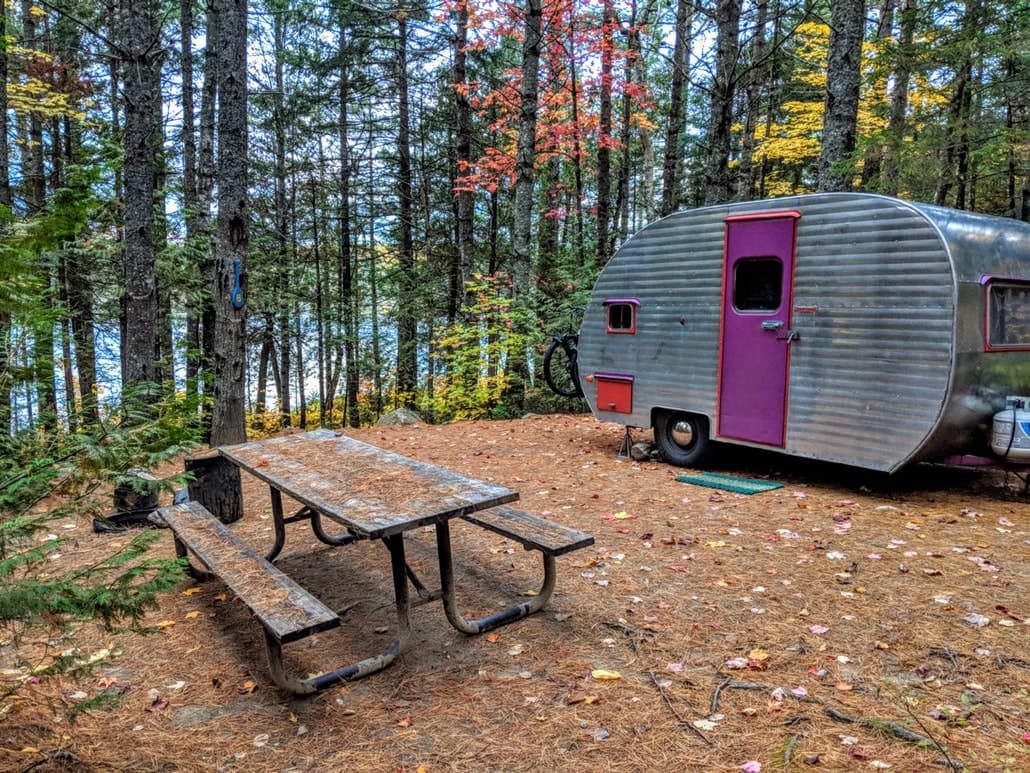
Image from The Dyrt camper Shari G.
Though the Pierce-Arrow Touring Landau is the first vehicle that resembled a modern RV and can be classified as such, there are other recreational vehicles that preceded it—bridging the gap between the era of carriages and stagecoaches and the automobile. Indeed, the term landau actually was a type of carriage. The name signaled comfort over long distances to potential buyers.
Though it’s been well over a hundred years since landaus ruled the road, you might actually have seen one recently— the carriage that carried Prince William and Kate Middleton from their wedding is a very fancy, especially opulent landau. So were the bright yellow touring coaches which transported sightseers around Yellowstone starting in 1883.
These Tally-Ho touring coaches were manufactured by Abbot-Downing Company of Concord, New Hampshire for the Yellowstone Park Transportation Company. For $50, visitors could go on a multi-day tour in one of the Yellowstone wagons after disembarking from the Northern Pacific Railroad’s stop in Cinnabar, Montana. The first stop was the hotel at Mammoth Hot Springs, and one visitor’s recollection was that the tours were “entertaining because the scenery was spectacular and the drivers provided a running commentary, sometimes exaggerated, of the park and everything in it.”
Despite a price tag that would now be equivalent to $15,000 per wagon, however, Abbot-Downing went out of business in 1901 as a result of changing times. By 1916, just six years after Pierce-Arrow’s landau RV hit the market, carriages at Yellowstone were abandoned in favor of cars. The inciting incident was a terrible carriage crash after one of the horses pulling a Yellowstone wagon spooked when it passed a sightseer’s automobile on a narrow road. Eleven passengers were injured, and the carriages fell out of use except for specialty tours into the 1970’s.
You can still see original examples of Yellowstone’s landaus at the Plains Museum in Laramie, Wyoming and at the Frontier Days Old West Museum in Cheyenne, Wyoming, complete with their original hundred-and-thirty-year-old paint job. The Old West Museum also has other examples of early outdoor recreational vehicles, too. There is, for example, a type of carriage called a hunting break, circa 1895, that is the predecessor of the modern four-wheel-drive overlander. Hunting breaks also went by another name that, like the landau, transferred over to automobiles and still in use today— the station wagon.
The RV Industry Takes Off
Anyone who has looked into converting an old Dodge delivery van or a shiny new Sprinter into a home on wheels might recognize the Pierce-Arrow Touring landau as the great, great grandfather of today’s Type B motorhomes, which have more in common with cars and trucks than busses or big rigs. Soon, though, Pierce-Arrow’s model was followed up with other types of RVs in a burgeoning market.
The 1913 Earl became one of the earliest modern travel trailers. It was named for its inventor, a Cal State professor who wanted his brand new Model T to be able to pull a combination dining and sleeping space for long trips. True to the era, this new type of RV didn’t come rolling off the same assembly line as its inventor’s Ford. He had it custom-built by a Los Angeles carriage-maker. You can see it for yourself at the RV/MH Hall of Fame in Elkhart County, Indiana— also known as the RV capital of the world.
Another early travel trailer manufacturer was Auto-Kamp Trailers, which began producing early pop-up campers out of Michigan in 1910, the same year as Pierce-Arrow’s Type B Motor Home. Auto-Kamp remained popular as the Roaring 20’s booming economy and infatuation with autos brought new types of RVs to the fore. One brochure from sometime around 1925 advertised that the “Auto-Kamp Trailer carries your complete camping equipment and the duffel that crowds your car.”
That shift in advertising copy reveals how much had changed in just a couple of decades. Already, RVs were no longer limited to wealthy travel buffs. Now they were a full-fledged alternative to pricey National Park lodges and far-flung hotels on America’s fledgling roadways. Camping by RV had become so popular that owners of all sorts of RV types were able to form organizations around their interest, or were collectively referred to by the public as “Tin Can Tourists.”
Prepare for your next adventure by downloading maps. The Dyrt Pro lets you download maps and campgrounds without cell service. “My alternative to using pro would be to drive back out to cell service”.
And Then the Modern RVs Emerged
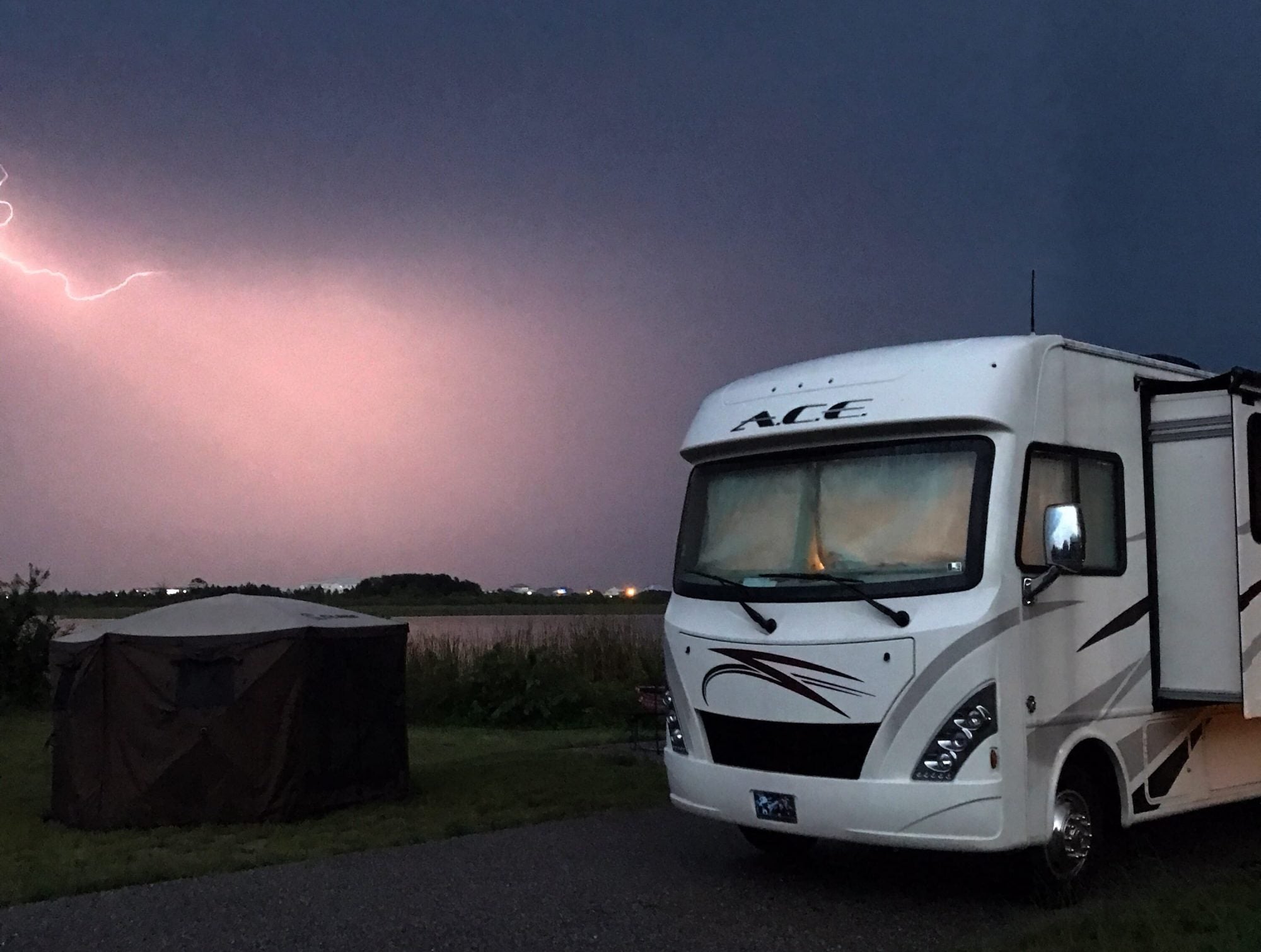
Image from The Dyrt camper Judy H.
As highways expanded and eventually became Interstates, and as Americans became more mobile throughout the Depression and into the midcentury, the popularity of campers and RVs continued to grow. By the 1950s, several of the most recognizable brands in the RV industry had been founded, including Holiday Rambler, Airstream, Westfalia, and Winnebago.
Models evolved in looks and amenities from the deco, aero-tech inspired campers of the 1930s and ’40s to the gleaming, space-age trailers of the ’50s and ’60s to the earth-toned RVs of the ’70s and ’80s. Over the years, recreational vehicles grew more popular, and thanks to periods of low gas prices and a booming economy, RVs also got progressively bigger and bigger. Now there weren’t just the three categories of trailers, campers (both of the pop-up and “canned ham” varieties), and Class B campers built on car and truck frames.
Now buyers could also shop for longer, taller Class C RVs, which are still built on an automotive manufactured van frame with an attached cab section. Soon there were also Class A behemoth motorhomes, with luxury amenities that make their smaller, cheaper counterparts look as primitive as the Pierce-Arrow Landau with its chamber pot. Not only did the types of RVs explode across sizes and price points, so did accessories for RVs like camping solar panels, satellite generators, awnings, RV covers, generators, and more.
While recreational vehicles were popping up in driveways and campgrounds across the country, they also became cemented in pop culture, starting with movies like the 1953 Long Long Trailer, starring Desi Arnaz and Lucille Ball of I Love Lucy fame as a couple honeymooning in a 36-foot travel trailer. A decade later, a Volkswagen bus appeared on the album cover of The Freewheelin’ Bob Dylan. That was the same year President John F. Kennedy famously used an Airstream as his mobile office while inspecting weapons in the New Mexico desert.
In between, celebrated author John Steinbeck hit the road in a converted camper truck he named after Don Quixote’s horse Rocinante, in search of America. Seven years after, CBS TV correspondent Charles Kuralt wore out six motorhomes on a similar project, driving across America’s backroads while filming TV docu-series On the Road. Even less serious figures were onto the trend— in 1970, Barbie got her own RV, in addition to all the Jeeps and Corvettes the famous doll sometimes drives.
By the 1980’s, various types of RVs appeared in a slew of films, especially comedies like Stripes and The Blues Brothers. A 1986 Winnebago Chieftain even went to outer space— or at least the studio version of it– in the parody flick Spaceballs. In the 1990’s, an RV helped save mankind in the summer blockbuster Independence Day. In the early aughts, a VW bus was an icon of American family quirk in Little Miss Sunshine.
RVs As You Know Them Today
Today, there’s never been more types of RVs to choose from. There are brand new, lux options like the Thor Outlaw® Class A “toy hauler” with a built-in garage for a secondary vehicle, the kind of big rig you need a serious pull-through campsite to park. There are vintage Westfalia Vanagons that are on their second or third engine, all done up with brand new parts and paint and aftermarket accessories for overlanding.
Anyone who lives out west has surely seen their share of residential Dodge Promasters and Sprinters, the back French doors flung open to hand-built bunk beds and gear storage. Airstream enthusiasts can compare old and new models at conventions coast to coast, and any RV park you stop at will have a variety of Winnebagos, Tiffin Motorhomes, Gulfstream Conquests, Coleman Ultra-lites, and Pacific Coachworks fifth wheels parked in its pull-throughs.
You can rent RVs now through companies like Outdoorsy, which offers a variety of different RV types out of Los Angeles, Chicago, Denver, and San Francisco. We’ve even come full-circle, with traveling hotels like the Truck Surf Hotel— a funny concept when you consider that RVs started as an alternative to National Parks lodges and hotels.
There’s no doubt about it— RVs are deeply woven into diverse facets of American life. From family road trips to the Grand Canyon to California surf culture and Yosemite’s dirtbag scene to tailgaters to rock n’ roll counter culture, to full-time campers who make travel a lifestyle, even disparate subcultures have some link to some type of RV.
Interest may wax and wane with the times, but after almost a hundred and twenty years of campers, pop-ups, and big rigs, it should be no surprise that new types of RVs always seem to evolve with the times. We’re just happy to see campers make yet another comeback.
Related Campgrounds:
The Dyrt is the only camping app with all of the public and private campgrounds, RV parks, and free camping locations in the United States. Download now for iOS and Android.Popular Articles:
Articles on The Dyrt Magazine may contain links to affiliate websites. The Dyrt receives an affiliate commission for any purchases made by using such links at no additional cost to you the consumer.

